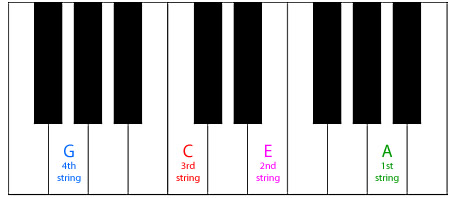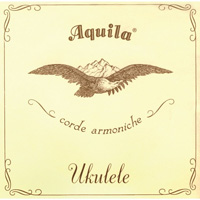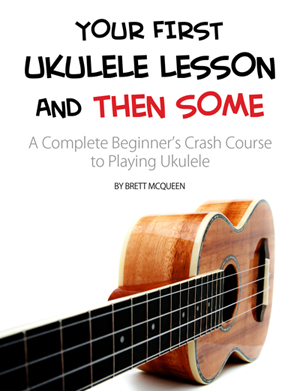For some of my video lessons on Ukulele Tricks, my tenor ukulele is tuned to low G tuning, sometimes referred to as linear tuning. This means, while you and I can play along together using the same chord positions, the overall sound comes across as slightly different.

In standard ukulele tuning, the top g-string of the ukulele is tuned higher than the middle two strings of the ukulele. More specifically, the top g-string is tuned to the “G” note above middle-C on a piano (learn more about standard ukulele tuning).
In low G tuning, all of the strings stay tuned the same except the top g-string is tuned down an octave to the “G” note below middle-C, as shown in the following figures:

Low G tuning represented on the piano

Low G tuning represented on the music staff
By tuning the top g-string down an octave, you add five additional notes to the bottom of the ukulele’s range of pitch. This produces a fuller, deeper sound to the ukulele.
Often times, people prefer the low G tuning on a tenor sized ukulele versus a soprano or concert sized (read more about ukulele sizes). You can see why a lot of ukulele players have more than one ukulele! This allows them to tune each ukulele to a different tuning.
 Please note that if you want to tune your ukulele to low G tuning, you need a special low G string set for your ukulele. If you try to tune the g-string of a regular ukulele string set down an octave, you will find that the string doesn’t hold tension very well and doesn’t stay in tune. To remedy this, you need a thicker, wound low G-string.
Please note that if you want to tune your ukulele to low G tuning, you need a special low G string set for your ukulele. If you try to tune the g-string of a regular ukulele string set down an octave, you will find that the string doesn’t hold tension very well and doesn’t stay in tune. To remedy this, you need a thicker, wound low G-string.
Whenever I tune my ukulele to low G, I like to use Aquila’s low G string set. You can buy a pack online depending if you have a soprano, concert
, or tenor
sized ukulele (links take you to product pages on Amazon for Aquila low G strings).
To tune up your low G string set, use a chromatic tuner (I recommend it), or use the “low G” setting on my free ukulele tuner tool.
If you run into any problems tuning your ukulele to low G, just post your comment below! I’d love to help.

